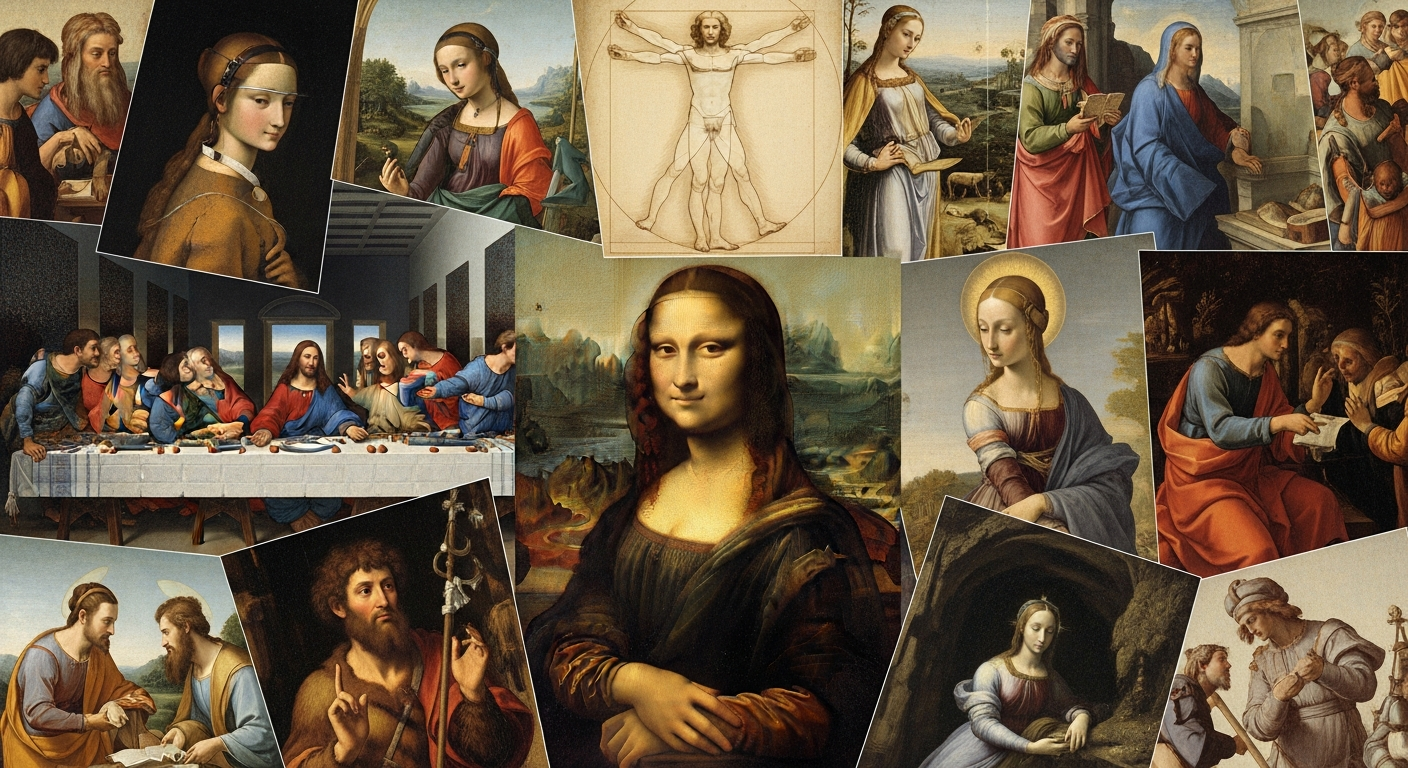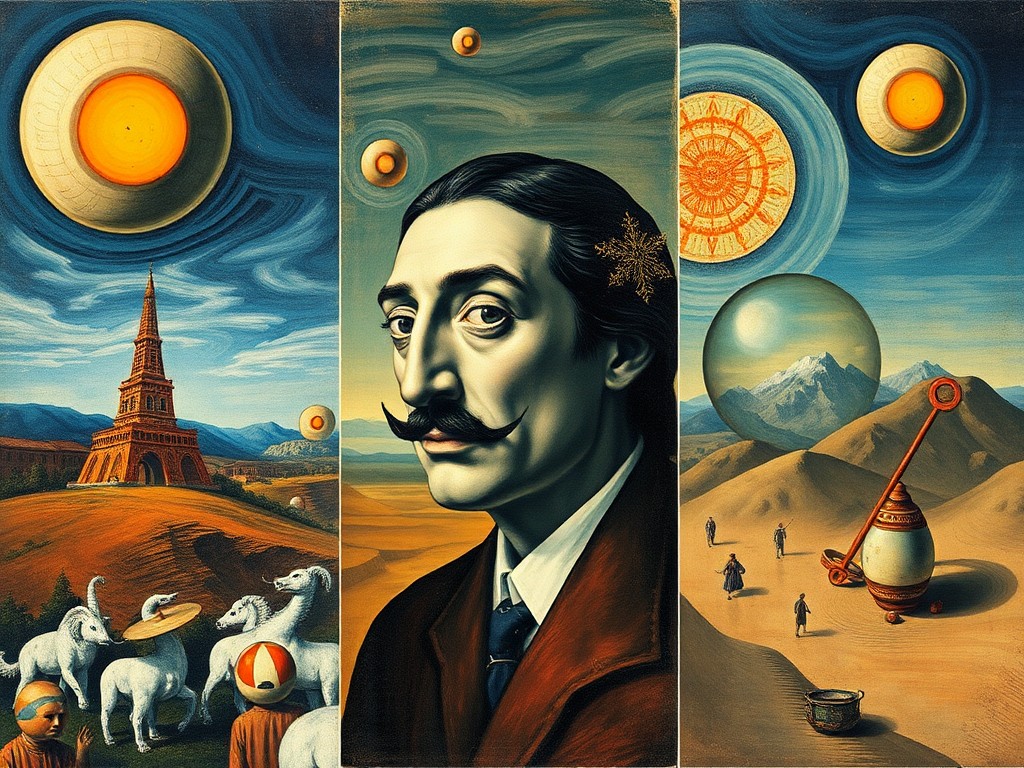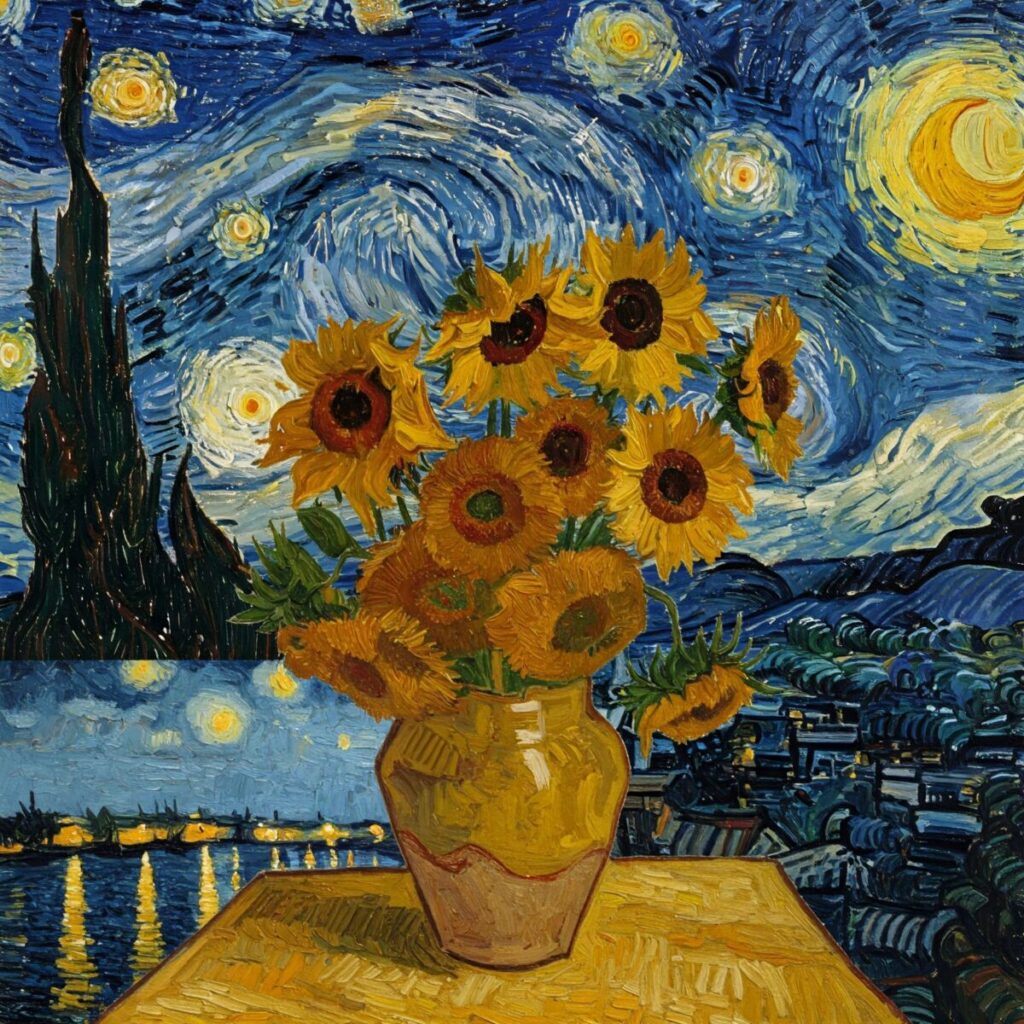Imagine a person who was a world-class painter, a brilliant inventor, a keen scientist, and a visionary engineer all at once. That person was Leonardo da Vinci, the ultimate ‘Renaissance Man’! While he designed flying machines and studied human anatomy, it’s the incredible collection of Leonardo da Vinci paintings that has captured the world’s imagination for over 500 years. His artworks are like mysteries waiting to be solved, filled with secret smiles, hidden symbols, and revolutionary techniques that changed art forever. Get ready to journey back in time and explore the top 10 Leonardo da Vinci paintings that showcase the mind of a true genius and secure his legacy in art history.
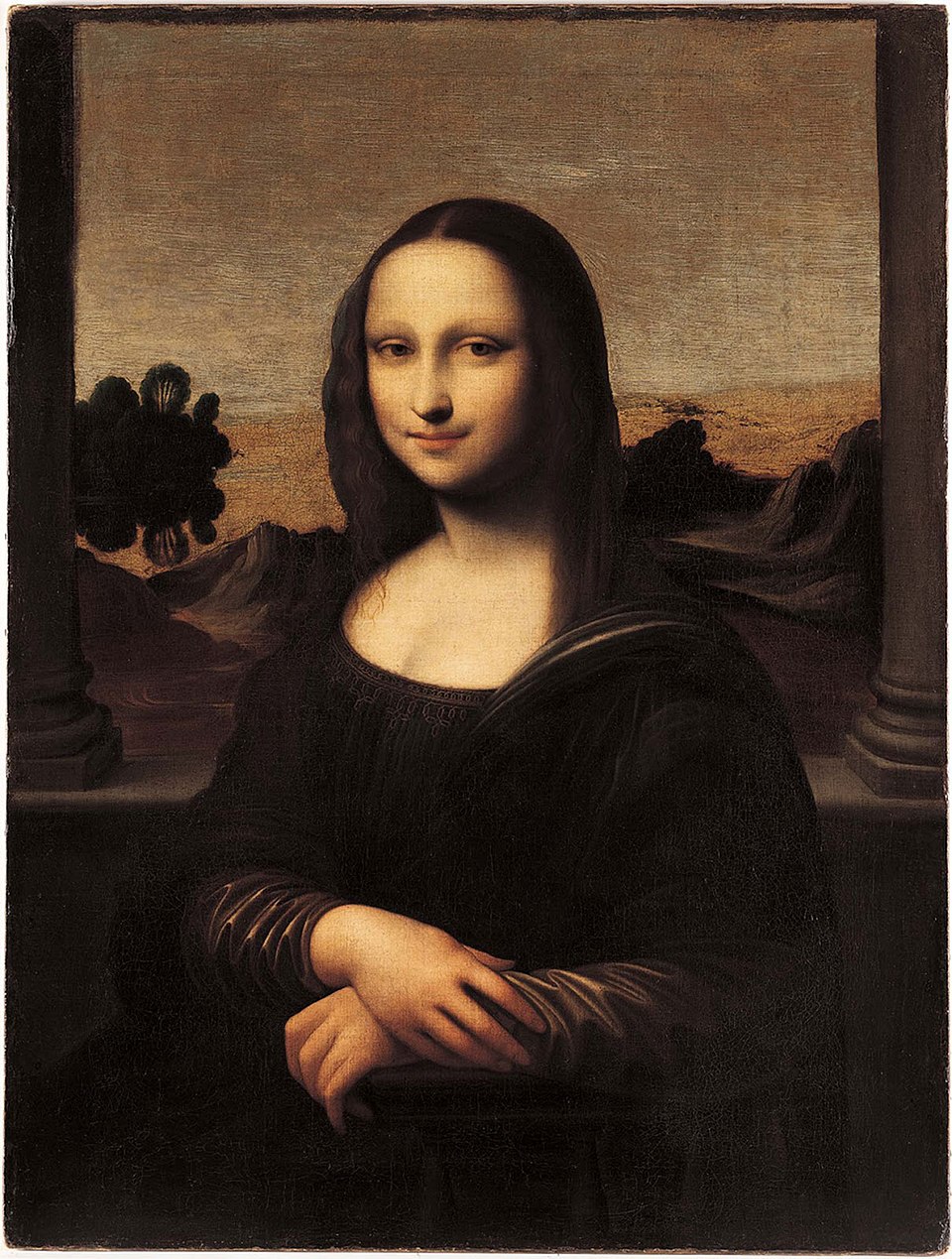
Mona Lisa (c. 1503–1506)
Description: Arguably the most famous painting in the world, the Mona Lisa is a portrait of a woman with an enchanting and mysterious smile. Is she happy? Is she sad? For centuries, people have debated her expression, which seems to change depending on how you look at it. Her portrait feels incredibly alive, as if she could start a conversation at any moment. The painting was famously stolen from the Louvre in 1911 and was missing for over two years before being recovered.
Painting Techniques: Leonardo perfected the ‘sfumato’ technique here, a method of blending colors to create a soft, hazy, and smoke-like effect. This is what gives her face and the background landscape their dreamlike quality, with no harsh lines or borders.
Location: Louvre Museum, Paris, France
Estimated Value: Priceless
The Last Supper (c. 1495–1498)
Description: This massive mural captures one of the most dramatic moments in Christian history: the instant Jesus tells his twelve apostles that one of them will betray him. You can feel the shock, anger, and confusion ripple through the room as each apostle reacts differently to the news. It’s a masterclass in human emotion and storytelling. Because of the experimental technique used, The Last Supper has required numerous restorations over the centuries to keep it from disappearing completely.

Painting Techniques: Instead of using the traditional, durable fresco technique on wet plaster, Leonardo experimented with tempera paint on a dry wall. This allowed him to work slowly and add detail, but it also meant the painting began to flake and decay very soon after it was completed.
Location: Santa Maria delle Grazie, Milan, Italy
Estimated Value: Priceless
Vitruvian Man (c. 1490)

Description: While technically a drawing, the Vitruvian Man is one of Leonardo’s most iconic works. It shows a man in two superimposed positions inside a circle and a square. It’s not just art; it’s a scientific study of human proportion, blending Leonardo’s deep understanding of anatomy with geometry and the ideals of the Roman architect Vitruvius. The text surrounding the figure is written in Leonardo’s famous mirror writing, which he wrote from right to left.
Painting Techniques: This masterpiece was created using pen and ink on paper. The precision of the lines and the accompanying mirror-script notes reveal Leonardo’s meticulous approach to both art and science.
Location: Gallerie dell’Accademia, Venice, Italy
Estimated Value: Priceless
Lady with an Ermine (c. 1489–1491)
Description: This is a stunning portrait of Cecilia Gallerani, the mistress of the Duke of Milan. Her elegant pose and the way she tenderly holds the ermine create a sense of life and personality that was revolutionary for its time. The ermine, a symbol of purity and moderation, adds a layer of symbolic meaning to the portrait. Scientific analysis revealed that Leonardo painted two earlier versions on the same panel before settling on the final composition with the ermine.

Painting Techniques: Leonardo used oil paint on a wooden panel, employing chiaroscuro—the use of strong contrasts between light and dark—to model Cecilia’s delicate features and the animal’s soft fur, making them appear three-dimensional.
Location: Czartoryski Museum, Kraków, Poland
Estimated Value: Priceless
Salvator Mundi (c. 1499–1510)

Description: Meaning ‘Savior of the World,’ this painting depicts Christ giving a blessing with his right hand while holding a transparent, crystal orb in his left. The painting’s history is shrouded in mystery, having been lost for centuries before being rediscovered and authenticated. It is one of the most controversial Leonardo da Vinci paintings. This is the most expensive painting ever sold at public auction, breaking all previous records.
Painting Techniques: The work showcases Leonardo’s mastery of oil painting, particularly in the soft curls of the hair and the ethereal quality of the crystal orb, which he painted with scientific accuracy regarding the properties of light.
Location: Private Collection
Estimated Value: Sold for $450.3 million in 2017
Virgin of the Rocks (c. 1483–1486)
Description: This painting shows the Virgin Mary, an infant John the Baptist, an infant Jesus, and an angel in a dark, rocky grotto. The tender interactions between the figures and the dramatic, almost mystical landscape are breathtaking. The pyramid-like composition draws the viewer’s eye around the sacred scene. Leonardo painted two versions of this composition; the other, slightly later version is located in the National Gallery in London.

Painting Techniques: This is a prime example of Leonardo’s use of chiaroscuro to create drama and a sense of depth. He also used sfumato in the background to make the distant mountains appear hazy and far away, a technique known as aerial perspective.
Location: Louvre Museum, Paris, France
Estimated Value: Priceless
The Annunciation (c. 1472–1475)
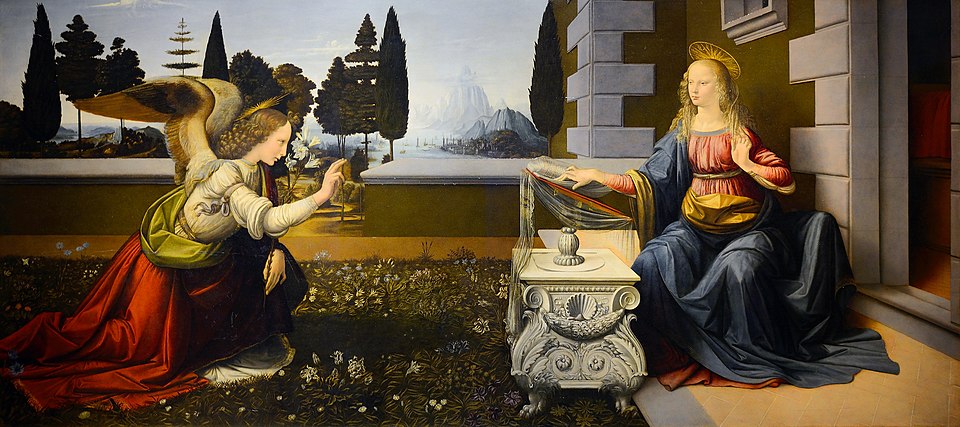
Description: One of Leonardo’s earliest known major works, this painting captures the moment the Archangel Gabriel kneels to tell the Virgin Mary that she will give birth to the Son of God. The scene is set in a beautiful Florentine garden, with incredible detail in the landscape, architecture, and even the angel’s wings. A youthful mistake is visible in the painting: from a certain angle, Mary’s right arm appears to be longer than her left.
Painting Techniques: Created while Leonardo was still an apprentice in Verrocchio’s workshop, this piece shows his early mastery of oil painting, perspective, and the study of nature. The wings of the angel were based on his studies of birds in flight.
Location: Uffizi Gallery, Florence, Italy
Estimated Value: Priceless
St. John the Baptist (c. 1513–1516)
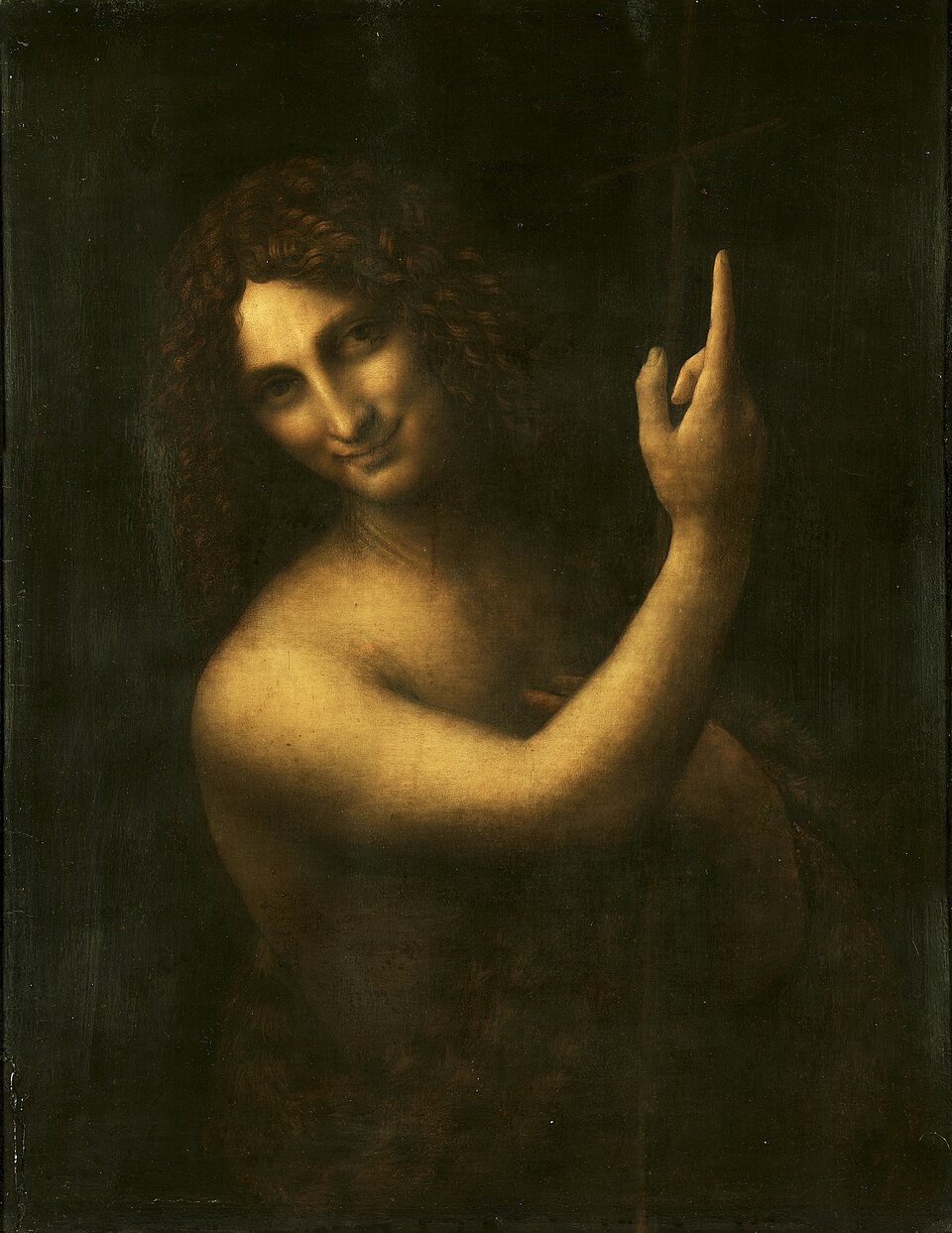
Description: Believed to be Leonardo’s final painting, this work is both captivating and unsettling. St. John emerges from a dark background, his finger pointing upwards towards heaven and a knowing smile on his face. The intense contrast between light and shadow makes the figure appear almost to glow in the darkness. The androgynous appearance of St. John and his enigmatic smile have led to many interpretations and debates among art historians.
Painting Techniques: This painting is the ultimate demonstration of chiaroscuro. The extreme darkness of the background makes the illuminated figure of St. John pop out, creating an incredibly dramatic and spiritual effect.
Location: Louvre Museum, Paris, France
Estimated Value: Priceless
Ginevra de’ Benci (c. 1474–1478)
Description: This is a portrait of a young Florentine aristocrat, known for her intelligence and beauty. Unlike other portraits of the time, she is not shown in profile but in a three-quarter view, looking out at the viewer with a serious, almost somber expression. The juniper bush behind her is a pun on her name, Ginevra. This is the only painting by Leonardo da Vinci on public display in the Americas.
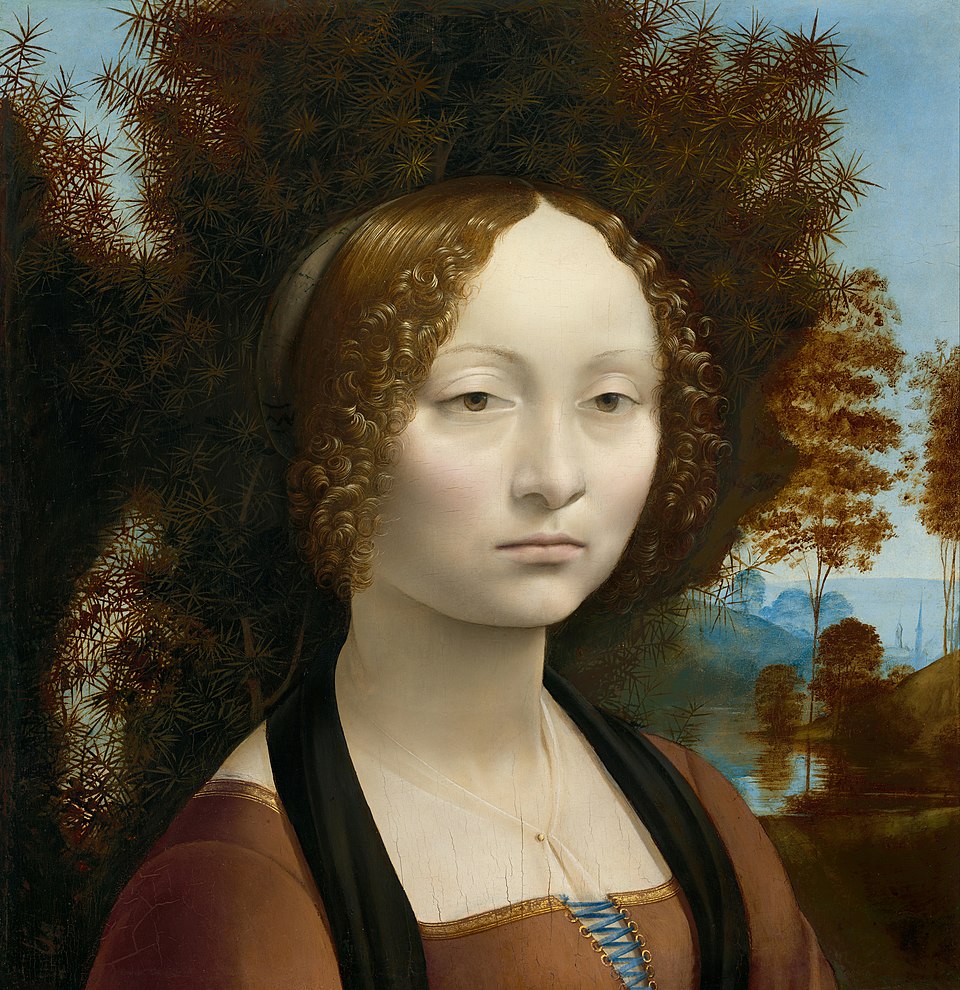
Painting Techniques: Leonardo used oil on wood panel, a medium still relatively new in Italy. He even experimented with blending the pigments with his own fingers, as his fingerprints have been found on the paint surface.
Location: National Gallery of Art, Washington, D.C., USA
Estimated Value: Priceless
Head of a Woman (La Scapigliata) (c. 1500–1510)
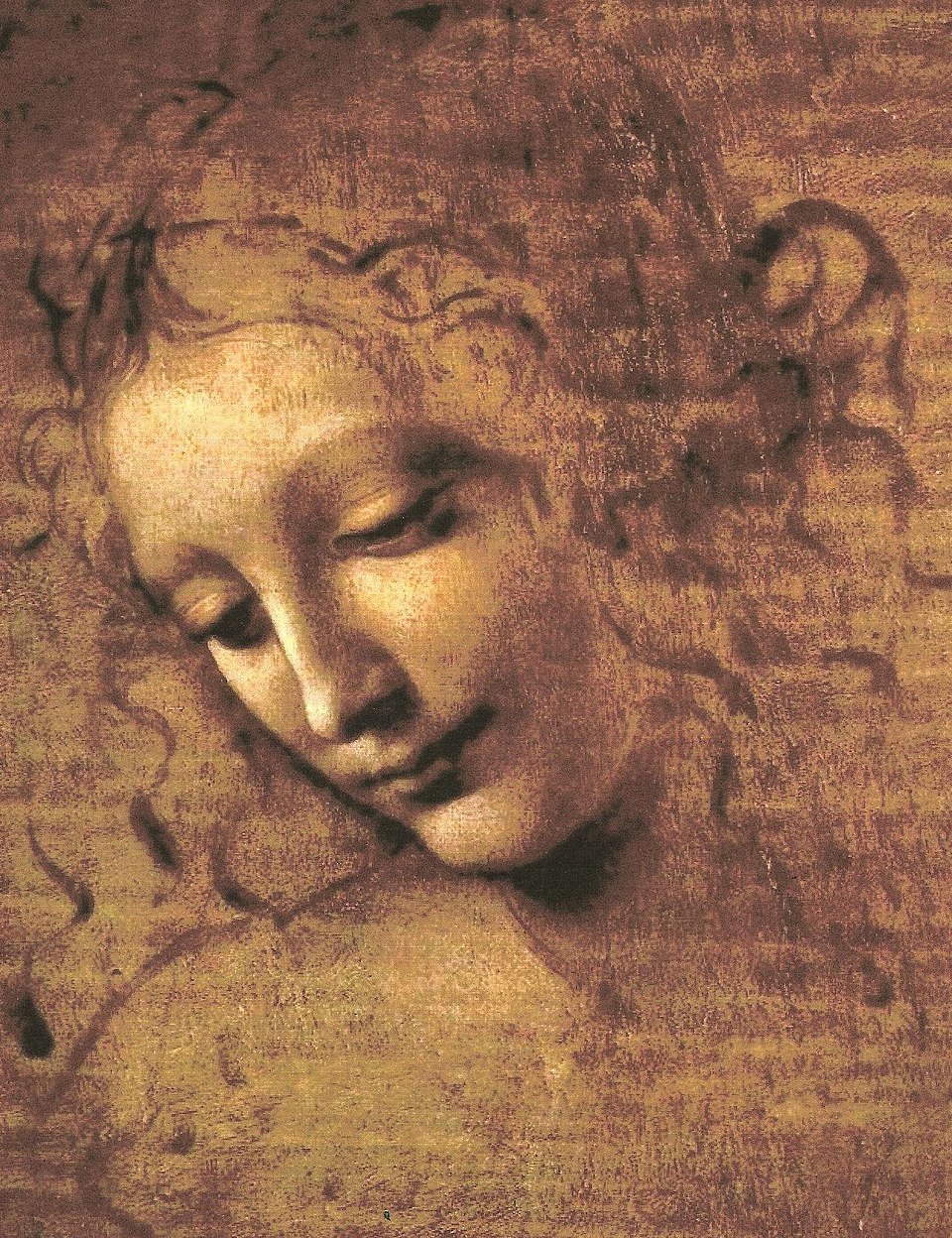
Description: Meaning ‘The Disheveled One,’ this small, unfinished work is incredibly intimate and beautiful. It shows a young woman with her head tilted down and eyes closed, lost in thought. The contrast between the highly detailed face and the roughly sketched hair and shoulders gives it a powerful, spontaneous feeling. Because it is unfinished, art historians have debated whether it was a preparatory sketch for a larger painting or a finished artwork in its own right.
Painting Techniques: This unfinished work, created with earth pigments and white lead on a small wood panel, gives us a direct look into Leonardo’s creative process. It showcases his ability to capture subtle emotion and a sense of inner life with just a few brushstrokes.
Location: Galleria Nazionale di Parma, Parma, Italy
Estimated Value: Priceless
Inspiration and Legacy
Leonardo da Vinci began his artistic journey in Florence as an apprentice to the prominent artist Andrea del Verrocchio, where he learned the foundations of painting, sculpture, and engineering. He was deeply inspired by the humanist ideals of the Renaissance, which emphasized scientific observation and the potential of humankind. Leonardo’s own legacy is immeasurable. He revolutionized painting through techniques like sfumato and chiaroscuro, influencing nearly every artist of the High Renaissance, including giants like Raphael and Michelangelo. His detailed anatomical studies and scientific notebooks pushed the boundaries of knowledge, cementing his status as a universal genius whose impact is still felt today in both art and science.
Final Thoughts on Top 10 Leonardo da Vinci Paintings
Leonardo da Vinci was so much more than a painter; he was a force of nature. His relentless curiosity drove him to explore the world in ways no one had before, and his art was the ultimate expression of his discoveries. The collection of Leonardo da Vinci paintings that survive today are not just pretty pictures; they are windows into one of the greatest minds in human history. They continue to inspire awe, spark debate, and remind us of the incredible power of blending art with science. His work is truly timeless, proving that a true genius never goes out of style.
FAQs: Leonardo da Vinci paintings
Why is Leonardo da Vinci considered a ‘Renaissance Man’?
He is called a ‘Renaissance Man’ because he was a master of many different subjects. He excelled as a painter, sculptor, architect, musician, scientist, inventor, anatomist, geologist, cartographer, botanist, and writer.
What is the ‘sfumato’ technique?
Sfumato is an Italian term that means ‘to evaporate like smoke.’ It’s a painting technique for softening the transition between colors, creating a soft, hazy, or smoky effect. Leonardo used it to make figures like the Mona Lisa appear more lifelike.
How many paintings did Leonardo da Vinci finish?
Despite his fame, Leonardo was a slow and methodical painter who often left projects unfinished. Fewer than 20 paintings are generally accepted by art historians as being entirely or largely by his hand.
Was the Mona Lisa ever stolen?
Yes! In 1911, an Italian handyman named Vincenzo Peruggia, who had worked at the Louvre, stole the painting by hiding in a closet overnight. It was missing for two years before it was recovered in Italy, which made the painting even more famous.

